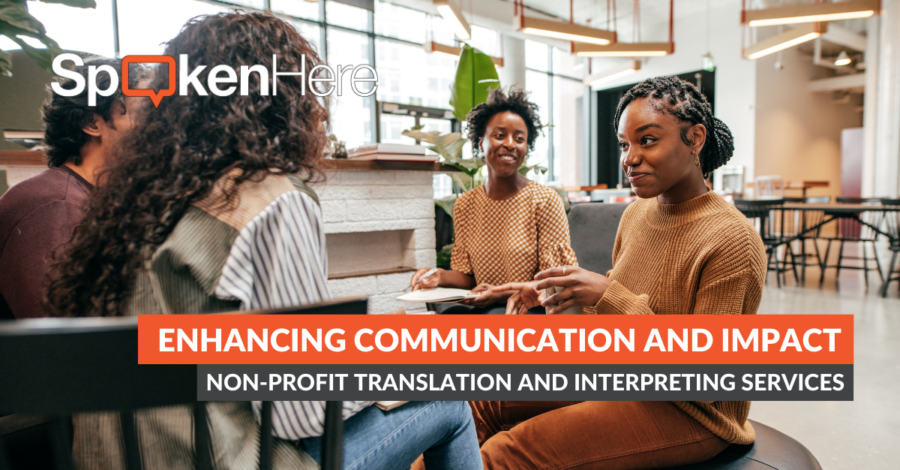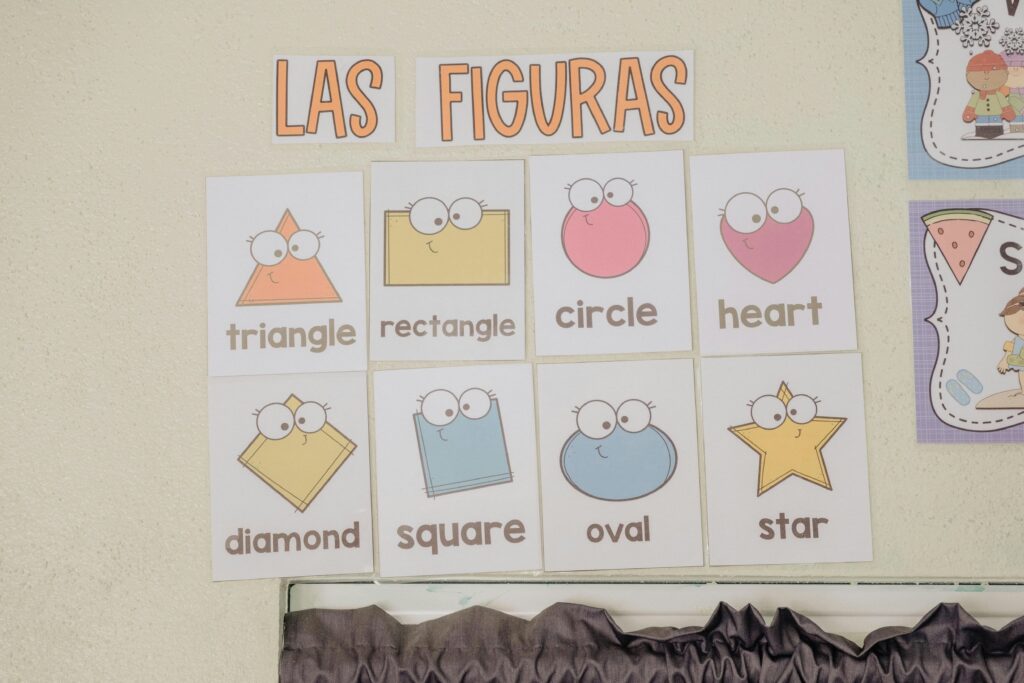
Many non-profit organizations serve diverse communities that may not have access to translation and interpretation resources.
To ensure these limited English proficiency (LEP) populations receive the support that they need in their native language, a growing number of organizations are providing clear, localized, and compassionate language services.
In This Article:
- Why Non-Profit Translation Services and Interpreting are Important and the key benefits
- Types of Language Services for Charitable Organizations
- Best Practices for Making Your Organization Accessible
- Action Steps for Non-Profit Organizations Serving Diverse Communities

In today’s globalized world, organizations in every industry face language access hurdles. However, non-profit organizations can face an even greater communication challenge, as they often work with the most vulnerable and at risk individuals and families. Whether providers and teams can communicate effectively during each interaction with their clients, patients, and all those seeking aid.
Imagine if…
…you were a victim of sex trafficking, and could not read the safety bulletins providing instructions on how to escape nor could you understand the rescue worker’s spoken communication.
…you were a parent of a child with special needs, and you didn’t understand the emails or messages from school administrators or clinicians who are striving to help your child.
…you were an elderly citizen in need of healthcare services, and you could not understand the medical provider’s questions nor the written instructions that were sent home with you.
In each of these scenarios, much rides on whether or not the individual(s) in question have a language gap with the service provider. They need help and support in a language that they understand.

Non-profit organizations can benefit from a variety of language services, including document/pamphlet translation and remote interpretation. While these are fairly standard language services, non-profits and those they serve often require industry-specific language professionals who can facilitate communication with both clarity and compassion.
For instance, a medical clinic requires a remote interpreter trained in healthcare jargon and privacy laws. Similarly, a women’s advocacy group might need a translator who understands not just the various target audience’s native languages, but also how to localize the translation of any flyers or communications to ensure accuracy and correct nuance given the sensitive material.
As we explore this topic of non-profit translation services and interpreting services, you will learn best practices and action steps for your organization. For your services and resources to make meaningful differences in the lives of those served, it must be truly accessible.
Why Non-Profit Translation Services and Interpreting are Important
Language services play a crucial role in the effectiveness of non-profit organizations. Translators and interpreters help teams communicate clearly with diverse communities, enhancing trust and building stronger relationships.
Providing translation and remote interpretation also improves access to inclusive resources and equitable care. For instance, when immigrants seek healthcare, understanding the information can make a significant difference.
Benefits of Language Services:
- Increased Engagement: More people participate when they understand the information provided.
- Improved Access: Language skills help communities navigate essential services like healthcare and education.
- Cultural Sensitivity: Tailored communication respects and acknowledges diverse cultural backgrounds.
Ultimately, investing in language services enhances an organization’s ability to fulfill their mission inclusively.

Types of Language Services for Charitable Organizations
Translation Services
Translation services involve converting written content from one language to another. This service is vital for non-profits that aim to share information with a linguistically diverse audience.
Key features include:
- Document translations: This may involve anything from reports to pamphlets.
- Cultural accuracy: With a diverse community, your message will be most clearly understood by localizing the content – i.e. by adapting idioms and expressions appropriately and adjusting images, colors, and content to align with community norms and values.
- Legal compliance: Certain materials may need to meet local regulations, which localization considers when translated by an industry expert.
Effective translation allows non-profit organizations to reach a broader audience, and it ensures that important messages are understood correctly.
Remote Interpretation Services
Remote interpretation services provide real-time language support for conversations and meetings. This service is increasingly important, especially in our digital world.
Key features include:
- Video and audio options: Interpreters can facilitate discussions through video remote interpreting (VRI) or over-the-phone interpreting (OPI).
- On-demand access: We can quickly mobilize interpreters for urgent communication needs, but also recommend when possible scheduling an interpretation session ahead of time.
This approach enables non-profits to interact with clients and partners globally, breaking down language barriers with ease.
Other Language Services
While translation and interpretation are the most well-known language access solutions requested by non-profits, there are many other language solutions for more specific needs.
Voiceover services involve recording spoken content in different languages. This service is crucial for videos, presentations, and training materials aimed at multilingual audiences. Voiceover services allow non-profits to deliver messages in an engaging format, making information accessible and approachable for everyone.
Subtitles and captioning makes your content more accessible for consumers who speak other languages, and for those who may be hard of hearing.Adding subtitles to your videoscan greatly expand your audience reach and assist more people in understanding your message.
Best Practices for Making Your Organization Accessible
If you want your organization to be accessible to a diverse community with language gaps and limited English, then follow these best practices.

Develop Clear Language Policies
Creating clear language policies is essential to outline the goals and standards, including what languages your organization supports (if limited) and the types of language services offered.
It’s also important to include guidelines for staff and volunteers. Training sessions can help team members understand the language gap of your audience and develop procedures for how to handle situations requiring translation or interpretation.
Maintain Consistency and Accuracy
Consistency in language services builds trust within your diverse community. Using qualified translators and interpreters is crucial. They should be familiar with the specific terminology relevant to your cause, as already mentioned.
Additionally, regular reviews of any translated materials can aid in catching errors and outdated information, avoiding misunderstandings that may impact your message.
Ensuring Confidentiality and Sensitivity
Confidentiality is vital for many non-profit organizations. When a third person is involved in confidential communication (such as a remote interpreter), personal information must be handled with care and follow privacy practices.
Cultural understanding should also be a priority. The diverse community your organization serves require language professionals to approach engagements respectfully.
Action Steps for Non-Profit Organizations Serving Diverse Communities
No matter what type(s) of language services your organization needs to serve your audience most effectively, choosing high-quality, human translators and remote interpreters enhances your organization’s communication and outreach.
These action steps below can improve your organization’s language resources.
Action Steps for Ensuring LEP Individuals Experience Equitable & Inclusive Communication:
- Assess Language Needs
Identify the languages spoken in your diverse community. - Develop Multilingual Resources
Create brochures, websites, and other materials in multiple languages by engaging a specialized translator. This ensures information is accessible to everyone. - Train Staff and Volunteers
Provide training on cultural sensitivity and effective communication to help your team engage better with diverse populations. - Leverage Technology
Use remote interpretation mobile platforms to support communication. - Monitor and Evaluate
Regularly assess the effectiveness of your language services to expand and improve as needed.
SpokenHere Translators and Interpreters Provide Meaningful Communication
Our team of professional translators and remote interpreters already supports diverse communities across the United States. They enhance the efficiency of many charitable organizations by ensuring clear and compassionate communication. When they fill the language gap, it allows non-profits to build stronger relationships with populations they serve, such as at-risk teens and families in need. A caring voice can help someone struggling work through even the most complex conversations, and we always strive to be that.
See in our case studies with non-profit partners the impact that language professionals have made by providing culturally sensitive, industry-expert language services. Additionally, our non-profit translation services and interpreting teams are committed to complete confidentiality to protect sensitive data, while delivering the necessary quality your organization demands.
We are honored to work with the non-profit and charitable organization making positive changes in the world. Contact us today to learn more about our services and any other language needs your team might have.